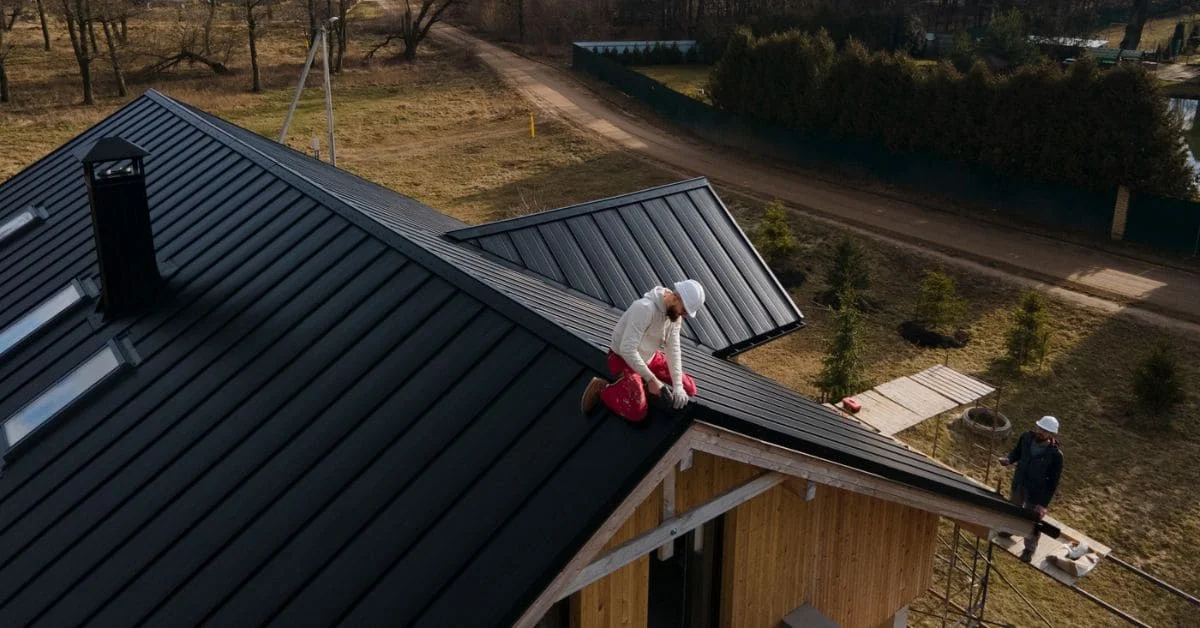Your roof is your home’s first line of defense against wind, rain, and whatever the sky throws at you and when it’s time for an upgrade, understanding roof replacement cost can feel like decoding a secret language. In this guide, we’ll break down the cost to replace a roof from materials and labor to permits and surprise repairs so you can bid farewell to sticker shock and confidently plan a 2025 roof replacement that protects your family and your wallet.
Table of Contents
Understanding Roof Replacement Cost in 2025
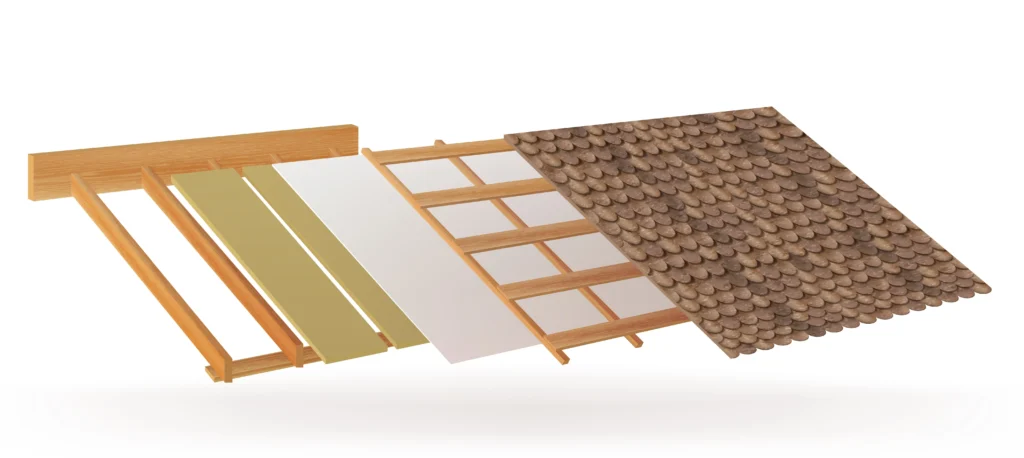
When you hear “roof replacement cost,” you might instantly think of a single number on a contractor’s estimate. But in reality, that figure is a bundle of moving parts. First up, there are materials from basic asphalt shingles to fancy metal panels and each comes with its own price tag. Then there’s labor, which covers everything from hauling away your old roof to carefully nailing down the new one. Don’t forget permits, either: depending on where you live, your city or county may charge a fee just to approve the work. And finally, you’ll need to decide between a full tear‑off (removing every layer of your old roof) or an overlay (laying new shingles over the existing layer). If your decking is in good shape, an overlay can save you money and a bit of time but a tear‑off ensures you catch any hidden rot before it becomes a leak.
So, how does everyone arrive at that “average” cost per roof? It usually boils down to one simple metric: cost per square foot. Roofers measure your home in squares each one equals 100 square feet and multiply by a dollar amount based on your chosen material and local labor rates. For example, if asphalt shingles run about $4 per square foot in your area and your roof is 1,500 square feet (15 squares), you’re looking at roughly $6,000 for materials and labor. From there, add permit fees (say $300–$600), factor in disposal costs for the old roofing, and toss in a small cushion for any unexpected repairs like replacing a few rotten boards and you’ve got your ballpark figure.
Here’s a quick, actionable checklist to demystify the math:
- Measure Your Roof: Grab a tape measure or ask your contractor for the square footage.
- Choose Your Material: List out prices for at least two options (shingles vs. metal, for instance).
- Get Local Labor Rates: Call three local roofers for ballpark labor costs per square.
- Factor in Permits: Check your municipality’s website or give them a quick call.
- Add a Safety Buffer: Plan for 10–15% extra in case you uncover deck damage or need upgraded underlayment.
Breaking down costs this way takes the mystery and the stress out of planning your project. You’ll walk into contractor meetings armed with real numbers, and you’ll be able to spot a fair bid when you see one. Plus, knowing where every dollar is going helps you make savvy choices like opting for that high‑quality underlayment if it means avoiding leaks and repairs down the road.
More Cost Breakdown
Want to explore costs in even greater detail? Check out these posts:
Average Roof Replacement Cost by Material

Not all roofs are created equal your choice of material can mean the difference between a budget‑friendly refresh and an investment that pays dividends for decades. Here’s a down‑to‑earth look at common options:
Asphalt Shingles
- Cost per square foot: $3–$6
- Lifespan: 15–25 years
- Why homeowners love them: They’re lightweight, readily available, and simple for roofers to install.
- Action tip: If you’re on a tight budget, stick with a traditional three‑tab shingle. But bumping up to an architectural style adds durability and curb appeal without breaking the bank.
Metal Roofing Panels
- Cost per square foot: $7–$12
- Lifespan: 40–70 years
- Why it shines: Metal reflects heat, can shrug off heavy rain and snow, and often comes with a transferable warranty.
- Action tip: Ask your contractor about ribbed vs. standing‑seam profiles; the latter costs more but unlocks better waterproofing and a sleeker look.
Clay and Concrete Tiles
- Cost per square foot: $8–$15
- Lifespan: 50+ years
- Why they’re special: Tiles bring classic style think Mediterranean or Spanish‑inspired homes and stand up to fire and rot.
- Action tip: Check that your home’s structure can support the extra weight. If you need reinforcement, include that cost in your quote to avoid surprises.
Flat Roofs (EPDM / TPO)
- Cost per square foot: $5–$10
- Lifespan: 20–30 years
- Why they work: Perfect for modern designs or home additions, these membrane systems handle low slopes and can be white‑coated to cut cooling bills.
- Action tip: Add an inspection for ponding water and drainage at the start fixing those issues before installation saves you headaches later.
Solar Shingles & Green Roofing Options
- Cost per square foot: $12–$25 (solar), $10–$20 (living roofs)
- Lifespan: 20–30 years (solar), variable for green roofs
- Why they’re gaining fans: Solar shingles offset electric bills, while living roofs improve insulation and support biodiversity.
- Action tip: Hunt for local incentives many states offer tax credits or rebates that can knock thousands off your final cost.
By matching your budget, style, and performance goals to the right material, you turn your roof from a line item into a smart investment. Always ask for sample boards or roof clips so you can see and feel your options before you decide.
Regional & State‑by‑State Cost Breakdown
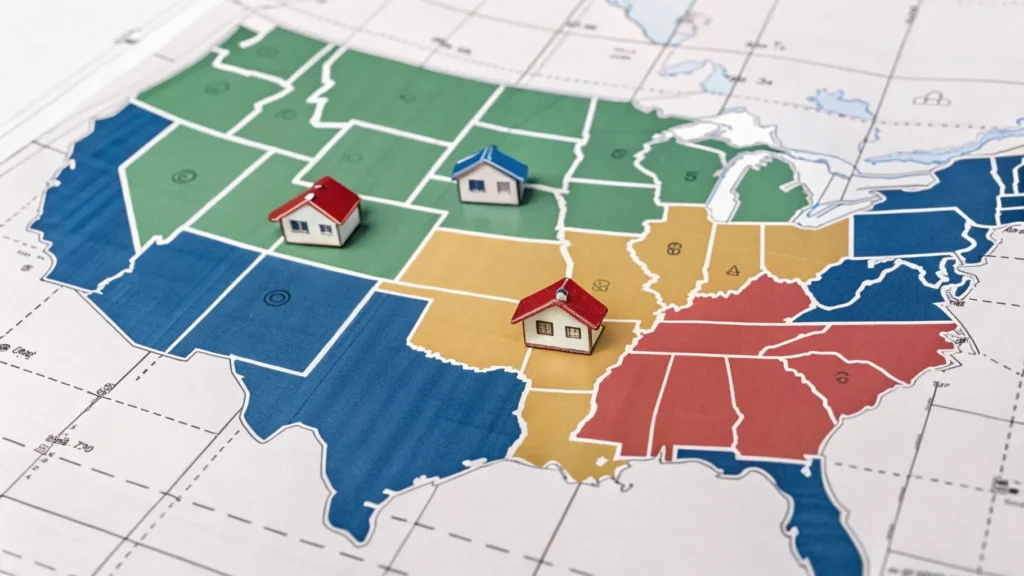
Your zip code matters almost as much as your roof style. Material prices, labor rates, permit fees, and even dumpster rentals shift from coast to coast. Here’s how to think regionally:
Northeast vs. Midwest vs. South vs. West Coast
- Northeast (e.g., Boston, New York Metro): Higher labor costs and stricter codes can push asphalt replacements to $5.50–$7 per sf.
- Midwest (e.g., Chicago, Minneapolis): Competitive markets often bring rates down to $3.50–$5 per sf for the same asphalt shingles.
- South (e.g., Atlanta, Miami): Hot weather demands better underlayment; expect $4–$6 per sf plus occasional hurricane‑proof upgrades.
- West Coast (e.g., Los Angeles, Seattle): Coastal corrosion and steep slopes bump metal roof jobs into the $8–$12 per sf range.
Metro‑Area Examples
- Los Angeles: Asphalt $4.50–$6.50/sf; Metal $9–$13/sf
- Chicago: Asphalt $3–$5/sf; Clay tile (rare) $10–$14/sf
- Miami: Asphalt $4–$6/sf plus wind‑resistant fasteners; TPO flat roofs $5–$8/sf
Permit Fees & Local Add‑Ons
- Typical permit range: $200–$800 depending on municipality
- Additional costs: Historic‑district approvals, debris‑hauler surcharges, weekend‑haul premiums in dense cities
- Action tip: Call your city’s building department early knowing exact permit costs helps you compare apples‑to‑apples when vetting bids.
Putting It All Together
- List Your Local Averages: Jot down published labor and material rates for your state.
- Ask for Line‑Item Quotes: Demand that contractors separate material, labor, permit, and disposal fees.
- Compare Total Package Prices: A lower material rate could hide higher labor or permit costs look at the final bottom line.
Taking a regional lens ensures you’re not surprised by sticker shock on bid day. With this roadmap, you’ll know exactly where your budget needs to stretch and where you might find some breathing room.
Insurance Claims, Coverage, and Financing Options

Navigating insurance can feel like wandering through a maze, but knowing what to look for can save you time, money, and headaches. First, check whether your homeowner’s insurance policy covers roof replacements many plans will foot part of the bill if damage comes from a sudden event like a hailstorm or fallen tree limb. Before you call a contractor, file a claim: snap photos of the damage, jot down dates, and submit everything through your insurer’s app or website.
When the adjuster shows up, treat the meeting like a team effort. Walk the roof with them (from the ground or safely on a ladder) and point out any suspect spots. Be honest about past repairs and don’t be shy to ask questions: “How much of this damage is covered?” or “What deductible applies here?” Once you have the adjuster’s report, compare it against at least two contractor estimates to ensure the scope of work matches what your insurance will pay.
If insurance doesn’t fully cover your replacement or if you’re planning an upgrade consider these financing routes:
- Home Equity Loan or HELOC: Uses your home’s equity as collateral. Interest rates tend to be lower than credit cards, but you’re borrowing against your house.
- Roofing Credit Cards: Special cards that roll multiple projects into manageable monthly payments. Watch for promotional offers 0% APR for six to 12 months can be a big help if you pay on time.
- Personal Loans: Unsecured and quick to arrange. Rates vary based on credit score, so shop around for the best deal.
Whatever route you choose, run the numbers on monthly payments and total interest before you sign. A little homework here means you’ll avoid sticker shock down the road and you’ll rest easier knowing the financing fits your household budget.
DIY vs. Professional Roof Replacement
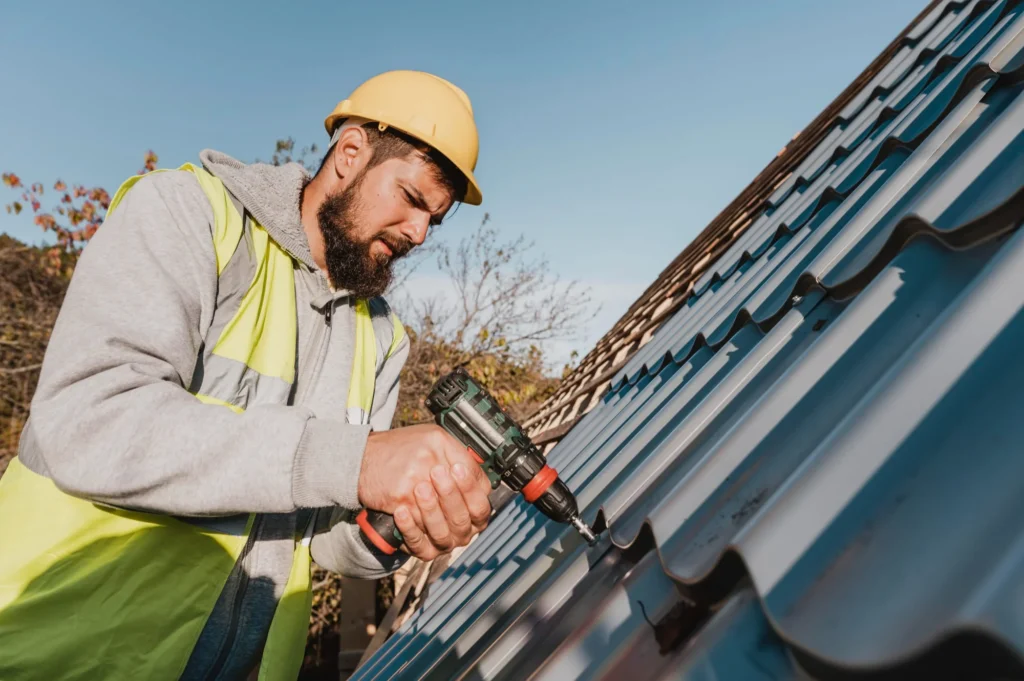
Rolling up your sleeves and tackling a roof replacement yourself can seem empowering and cheaper at first glance. But it comes with trade‑offs you’ll want to weigh carefully:
- Safety and Permits: Climbing ladders and hauling shingle bundles is risky. Falls are one of the leading causes of home‑improvement injuries. Plus, most municipalities require permits for roof work, and inspectors may refuse a DIY job that doesn’t meet code.
- Warranty Concerns: Manufacturers often void shingle warranties if they’re not installed by a certified pro. Restoring that warranty later can cost more than the labor you saved.
- Hidden Expenses: You might budget for shingles and nails, but what about upgraded underlayment, flashing around chimneys, or replacing rotten decking? Small repairs add up fast and missing them can lead to leaks and mold.
On the flip side, hiring a professional brings benefits beyond simply handing off the work:
- Transparent Estimates: A reputable contractor will give you a line‑item bid showing material, labor, permit, and disposal fees. This lets you spot where money is going and compare apples‑to‑apples between bids.
- Speed and Expertise: Pros have crews, specialized tools, and years of hands‑on experience. They finish jobs faster, with fewer mistakes and they know how to handle tricky spots like valleys, skylights, and flashing.
- Peace of Mind: A written contract, clear timeline, and workmanship warranty mean you’re protected if something goes wrong down the road.
If you’re budget‑conscious, you can still negotiate: ask contractors if they offer off‑season discounts or will bundle gutter cleaning with your replacement. And always get at least three bids sometimes the lowest isn’t the best, and the highest bid might include valuable extras you hadn’t considered.
Ultimately, the choice comes down to your comfort level with risk, your DIY skills, and how much time you can commit. For many homeowners, the extra cost of a pro is well worth the safety, efficiency, and warranty that come with it. Whichever path you choose, plan carefully, ask lots of questions, and keep your eye on long‑term value as well as upfront savings.
Lifecycle Cost Analysis and ROI by Roofing Material
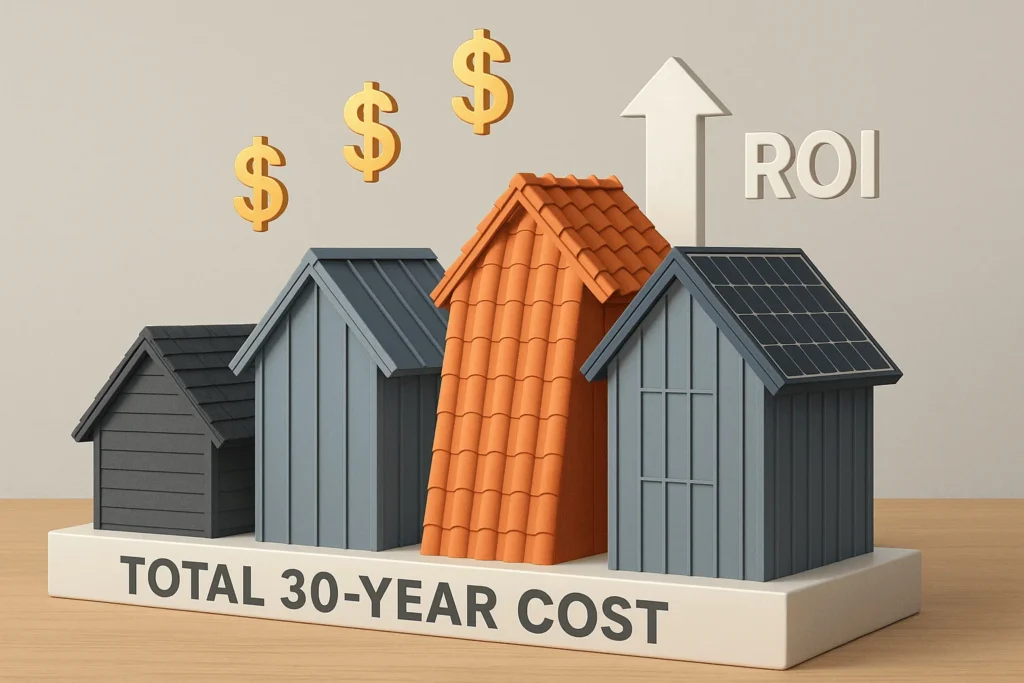
A low upfront price feels great but what really matters is how much you’ll spend (and save) over the life of your roof. Here’s how to think beyond the sticker price:
Total Cost of Ownership Over 20–30 Years
- Asphalt Shingles: You might pay $4 per square foot today, but plan on replacing them once (or twice) in three decades. Two replacements mean paying $4 × squares × 2, plus disposal fees, each time.
- Metal Panels: Higher upfront say $9 per square foot but a single installation can last 50+ years. No second replacement means more dollars in your pocket later.
- Tile & Concrete: Even steeper at $10–$14 per square foot, but with a 50-year lifespan and minimal maintenance, you could avoid two full tear‑offs that you’d face with shingles.
Maintenance, Replacement Intervals & Resale Value
- Routine Checks: Simple annual inspections catch loose shingles or small leaks before they balloon into rotted decking and a pro inspection may cost less than $200.
- Mid‑Life Refresh: Some roofs benefit from a partial re‑coat or sealing halfway through their life. That $1–$2 per square foot can add a decade to your roof’s warranty.
- Boosting Home Value: A durable roof can increase curb appeal and appraised value by 1–5%. When you sell, buyers appreciate knowing they won’t face a replacement for decades.
Using a Roof Replacement Cost Calculator
- Plug in Real Numbers: Enter your square footage, material prices you’ve gathered, and local labor rates.
- Compare Scenarios: See side‑by‑side totals for asphalt vs. metal vs. tile including future replacements.
- Test “What‑If” Savings: Adjust maintenance costs or resale bump to see how small improvements affect your long‑term ROI.
By looking at the full lifecycle initial install, upkeep, and eventual replacement you’ll choose a roof that not only fits today’s budget but also maximizes your investment years down the road.
Sustainability and Green Roofing Benefits
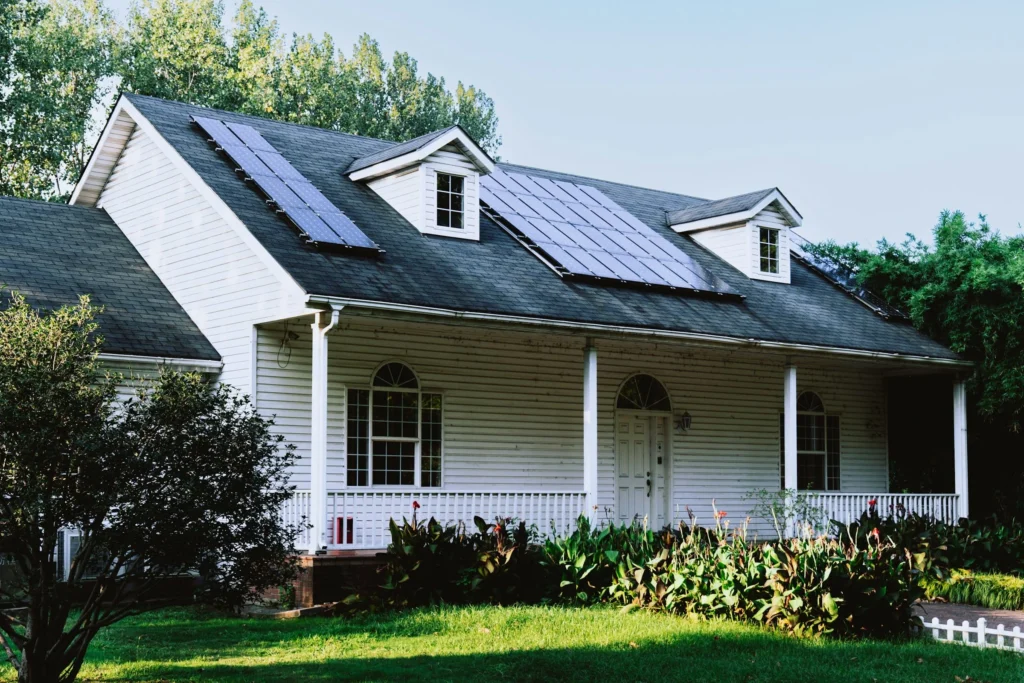
Going green isn’t just trendy it can shrink your energy bills and even earn you cash back from the government. Let’s explore how:
Cool Roof Coatings & Energy Savings
- Reflective Finishes: A light‑color coating on shingles or metal can bounce up to 85% of the sun’s rays. That can cut attic temperatures by 20–30°F and reduce air‑conditioning use by 10–15%.
- Action Tip: Ask your installer about cool‑roof rated products. A few extra cents per square foot today can save you hundreds each summer.
Tax Credits, Rebates & Incentives
- Federal Tax Credit: Certain solar‑integrated roofing systems qualify for a 26% credit on material and installation costs.
- State & Local Rebates: Many utilities offer rebates for high‑efficiency or recycled products sometimes $0.50–$2 per square foot.
- Action Tip: Before you order materials, check the DSIRE database online or call your energy provider to map out available savings.
Case Studies: Eco‑Friendly Roof Installations
- Recycled Shingle Project: A home in Phoenix swapped old asphalt for recycled‑content shingles, cutting material costs by 15% and qualifying for a city rebate netting a payback in under five years.
- Living Roof on a Dallas Addition: A 200‑sq.‑ft. green roof over a sunroom dropped indoor temps by 8°F and captured 20 gallons of rainwater per storm, slashing runoff.
Sustainability pays off in comfort, lower bills, and a smaller carbon footprint and with incentives in play, going green can be surprisingly budget‑friendly.
Roof Replacement Budget Tips and Cost‑Saving Strategies

Stretching your roofing dollars doesn’t mean cutting corners it’s about timing, smart questions, and proactive planning. Here’s your game plan:
1. Time Your Project for Seasonal Discounts
- Off‑Peak Seasons: Late fall and winter often slow down roofing crews. You can snag 5–15% discounts versus peak spring and summer months.
- Action Tip: Book early in the off‑season contractors appreciate guaranteed work, and you’ll lock in better rates.
2. Negotiate and Bundle Services
- Multi‑Service Deals: Ask if your roofer will throw in gutter cleaning, fascia repair, or attic insulation at a reduced rate when bundled with your replacement.
- Volume Leverage: If several neighbors need roofs, coordinate a group install contractors sometimes offer bulk pricing.
- Action Tip: Always get three bids, then gently mention competing offers when you ask for their best price.
3. Five‑Point Planning Checklist
- Scope & Specs: Write down exactly what you want tear‑off or overlay, shingle style, underlayment grade so bids are apples‑to‑apples.
- Permit Prep: Research permit costs and timelines; some cities take 2–4 weeks to approve.
- Material Ordering: Order materials yourself if your contractor allows it you might find supplier discounts or free delivery promotions.
- Site Readiness: Clear landscaping and cars from the driveway before crews arrive delays cost money.
- Payment Schedule: Structure payments around project milestones (e.g., 30% deposit, 40% after tear‑off, 30% on completion) to keep both sides accountable.
Implementing these strategies will help you trim fat without sacrificing quality and you’ll breeze through install day knowing you’ve maximized every roofing dollar.
FAQs
How much cost to replace a roof?
On average, homeowners pay between $5,000 and $15,000 for a full roof replacement on a 1,500 sq ft home though it can range from $3,000 on the very low end (simple asphalt overlay in a low‑cost area) up to $30,000+ for high‑end metal or tile in expensive metro markets. Your final number will depend on your roof’s size (measured in “squares,” where one square = 100 sq ft), material choice, tear‑off vs. overlay, local labor rates, and permit fees. Always add a 10–15% buffer for unforeseen repairs.
What factors most affect my roof replacement cost?
Your total bill hinges on five big things: material type (asphalt, metal, tile), roof size (measured in “squares,” where one square = 100 sq ft), local labor rates, permit fees, and whether you choose a tear‑off or an overlay. Add a small buffer (10–15%) for unexpected deck repairs or upgraded underlayment, and you’ll have a realistic budget figure.
How do I estimate my roof’s square footage?
You can measure each roof plane’s length and width, multiply to get its area, then add all planes together and divide by 100 to find squares. If that sounds tricky, ask your contractor for a precise measurement they often include it free in an estimate.
Are overlays really cheaper than full tear‑offs?
Yes overlaying shingle over shingle saves on tear‑off labor and disposal costs. But it only works if your existing roof structure is solid. If there’s hidden rot or multiple old layers, a tear‑off is safer and can prevent leaks (and surprise repair bills) down the road.
Will my homeowner’s insurance cover a new roof?
It depends. Insurance typically steps in for sudden, storm‑related damage (hail, wind, fallen trees) but won’t replace a roof at the end of its natural life. Always document damage with photos, file a claim promptly, and compare the adjuster’s scope with contractor bids to ensure covered work matches.
How often should I schedule roof maintenance?
A quick annual DIY check clearing debris, checking flashing, and inspecting for loose or curled shingles can catch small issues early. Every 5–10 years, invest in a professional inspection (around $150–$200) to spot hidden problems and protect your long‑term ROI.
Can I use a roof replacement cost calculator to plan my budget?
Absolutely. Input your roof’s square footage, material quotes, and local labor rates, then compare scenarios (asphalt vs. metal vs. tile). A good calculator also lets you factor in permit fees and a maintenance buffer so your estimate mirrors real‑world costs.
What’s the best time of year for a roof replacement?
Late fall and winter are “off‑peak” roofing seasons in many areas, meaning contractors may offer 5–15% discounts. Just be mindful of extreme weather plan for a dry week, and ensure your crew can work safely.
